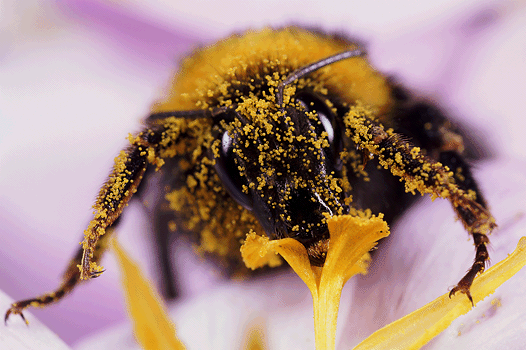Honey Bee Zombies Created by Fly Parasite?
Jan. 5, 2012
A previously unknown parasitic fly found in dead and dying honey bees in northern California may be a major culprit in a mysterious condition that has ravaged honey bee colonies in the United States. This condition, known as colony collapse disorder (CCD), was first detected in 2006, when beekeepers in the United States began reporting that large numbers of bees were mysteriously abandoning their hives. Studies revealed that the bees had died away from their hives. By 2012, CCD had been blamed in the deaths of millions of honey bees. Scientists have found evidence that pesticides, mites, a fungus, or a virus that causes honey bee wings to develop abnormally may be involved in CCD.
The parasitic fly, Apocephalus borealis, lays its eggs in the bees’ abdomen. Several days later, the infected bees fly from their hives at night. Scientists have found some of the infected bees still alive but in a zombie-like state. The insects were walking in circles, with no sense of direction, and soon become unable to stand up. Scientists aren’t sure whether the bees are leaving their hives under the control of the parasite or are being kicked out by their hive-mates, who may be sensing that something is wrong. Other parasites are known for their ability to control the behavior of the creatures they infest. The bees may also be leaving on their own to prevent their hive-mates from becoming infested. After the bees die, newly born fly larvae crawl from their neck. A. borealis also infects and kills bumble bees and paper wasps. Scientists believe it is very likely that the parasitic flies spread to honey bees from bumble bees.

A bee covered in pollen sips nectar from a flower. The bee will leave some of the yellow pollen grains at other flowers it visits, pollinating them. Many flowers rely on insects for pollination. © Steve Hopkin, Taxi/Getty Images
Bees are among the most useful of all insects. They pollinate many fruit and vegetable crops, which provide about a third of the human diet. In the United States, bees pollinate more than 130 crops, with a yearly value of $15 billion. These crops include apples, nuts, soybeans, and squash.
Additional World Book articles


